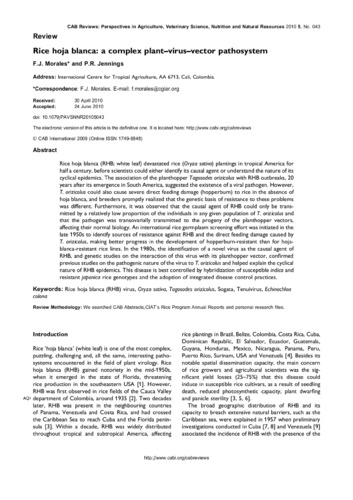Rice hoja blanca: a complex plant-virus-vector pathosystem
Rice hoja blanca (RHB; white leaf) devastated rice ( Oryza sativa ) plantings in tropical America for half a century, before scientists could either identify its causal agent or understand the nature of its cyclical epidemics. The association of the planthopper Tagosodes orizicolus with RHB outbreaks, 20 years after its emergence in South America, suggested the existence of a viral pathogen. However, T. orizicolus could also cause severe direct feeding damage (hopperburn) to rice in the absence of hoja blanca, and breeders promptly realized that the genetic basis of resistance to these problems was different. Furthermore, it was observed that the causal agent of RHB could only be transmitted by a relatively low proportion of the individuals in any given population of T. orizicolus and that the pathogen was transovarially transmitted to the progeny of the planthopper vectors, affecting their normal biology. An international rice germplasm screening effort was initiated in the late 1950s to identify sources of resistance against RHB and the direct feeding damage caused by T. orizicolus , making better progress in the development of hopperburn-resistant than for hoja-blanca-resistant rice lines. In the 1980s, the identification of a novel virus as the causal agent of RHB, and genetic studies on the interaction of this virus with its planthopper vector, confirmed previous studies on the pathogenic nature of the virus to T. orizicolus and helped explain the cyclical nature of RHB epidemics. This disease is best controlled by hybridization of susceptible indica and resistant japonica rice genotypes and the adoption of integrated disease control practices.

